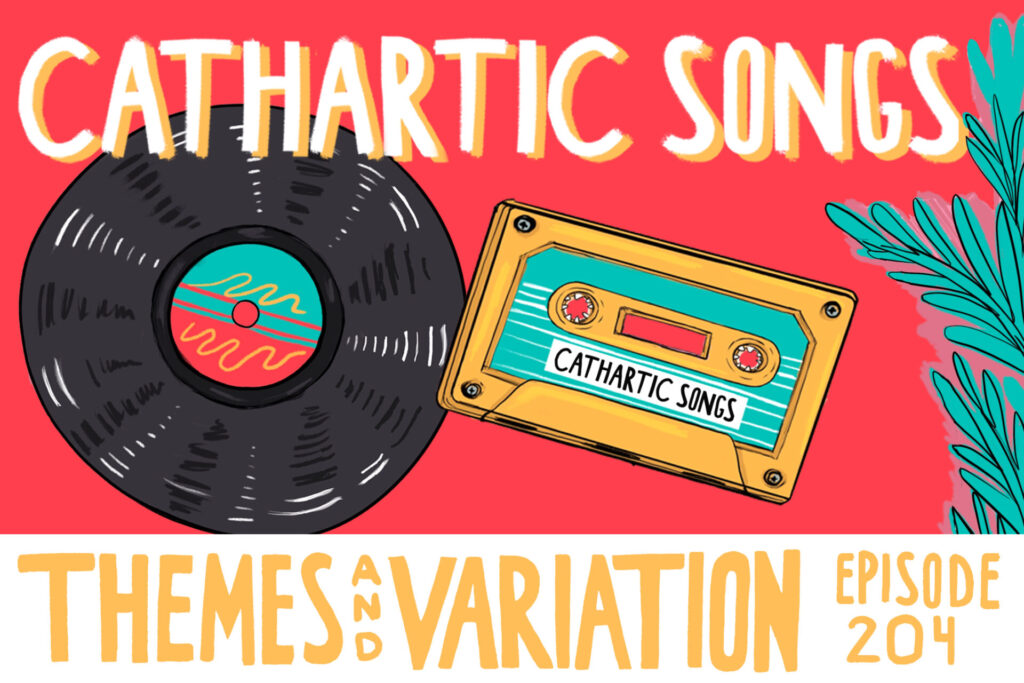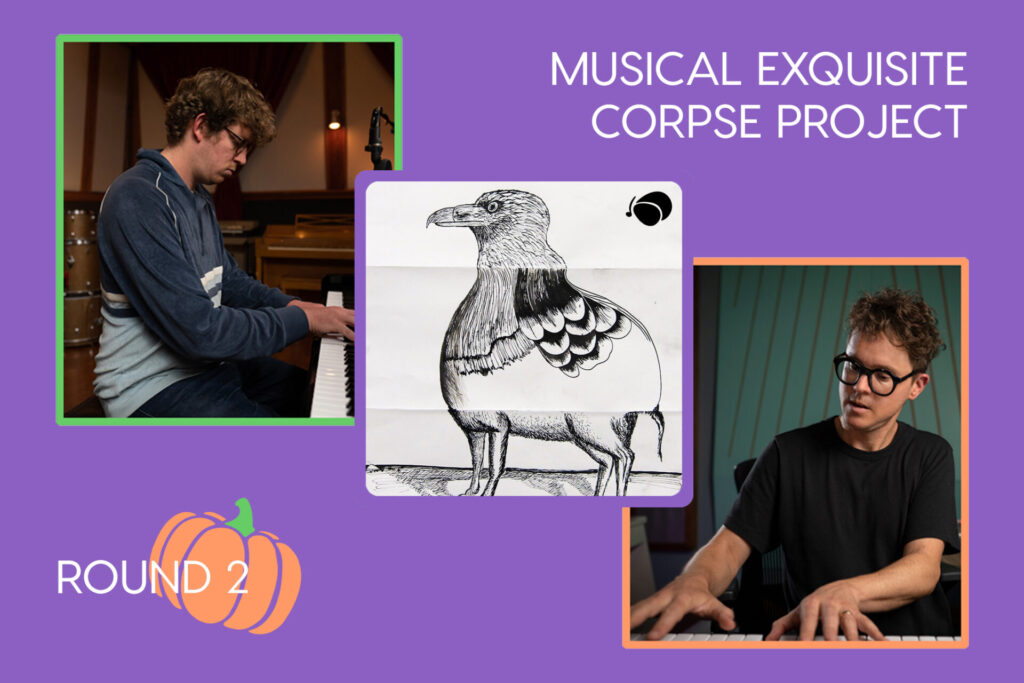+ Learn from Grammy-winning pop artist Kimbra how to harness the full creative potential of your voice in song. Check out her course.
Sam Amidon has ploughed his own furrow in contemporary folk with an impressive catalog of self-designated “reworkings” of timeless songs. His folk muso parents moved to be part of the thriving artistic milieu of Brattleboro, Vermont, thoroughly awash with song circles, contra dances, and shape note singing. Amidon osmosed all of it, soaking it up at a young age and joining his parents on stage when barely ambulatory.
He took to the fiddle early on, drawn to the traditional Irish style by the age of ten but also became adept on banjo and acoustic guitar. Amidon also slowly developed his particular vocal style capable of delivering clear narrative and alluring emotional cadence. It’s a style that sounds easier said than done, and Amidon has earned a fair amount of imitators since breaking onto the scene.
“At a certain point around age 20, I kind of recognized that I didn’t want to only be a fiddle player for a job anymore… I went to New York and started to do improvised music and play in some more song-based indie-rock type bands. I mainly started to play the guitar so I could play in the band Doveman with my friend Thomas Bartlett, because he was moving to New York to become a session musician.”
His successful touring and recording career — as both a solo artist and an avid collaborator — earned him the epithet of “folk experimentalist.”
His eureka moment came by connecting his fondness for the intense weirdness of old field recordings, particularly those from the Georgia Sea Islands, with his responses to the improvisational exploration of free jazz and art music culled from New York. This led to an aurally diverse discography peppered with a fine smorgasbord of musicians, arrangers and producers that garnered the attention of a substantial alternative folk/indie music audience.
“Five of the six song albums I have made are reworked traditional folk songs. So I’m not really a songwriter, but I am a singer of songs and writer of music. The thing with a folk song is that when you sing a folk song you are not doing a ‘cover.’ There is no single original version like there would be with a pop song cover. There’s many, many different versions that are shifting and changing, so it’s a great platform for other things to happen.“
However, it wasn’t until his sixth album that Amidon released his own songs on the dominantly self-penned nine-track The Following Mountain.
He described the impetus for this change of tack:
“It’s my first album of entirely original music, writing the music and songs from scratch. The lyrics are mine too although one song is adapted from a 17th century English poem, and there is another that has words from a folksong as well. When it came time to make this album, I knew that I needed to take a break from adapting folk songs because I didn’t want it to become a gimmick. I felt I had to go back to zero and start from there.”
The making of the album was highly collaborative with a wide ranging potpourri of top-shelf musicians. It all took place over one improvisation-filled day in New York City. And this one great day of creation, a kind of musical “big bang,” birthed all of the sketches that appear “song-like” on The Following Mountain. To me, the music pushes on the boundaries of song, certainly at the idea of “folk songs,” which Amidon’s audience has come to expect.
Amidon is the creative spine of the project and he is the only voice that sings. When he does, his vocals aren’t limited to traditional folk balladry but improvise as much as the instrumentalists, with great variety of expression, often we hear a merging of howls between violin and vocalist that layer into a timbre of distortion. As such, there are tonal variations from clear and audible lyric with attention to alliteration and consonance:
“Fortune forsaken
Fortune forsaken
I fail to understand her.”
Some lyrics present as snippets or thought dollops, slung on a motif. Sometimes, they provide a frame to hang the glorious splashes of instrumentalism.
And sometimes, Amidon’s lyrics deliberately eschew form, relaxing the strictures that bind the stories he soaked in growing up. Other times, there are seemingly disparate phrases that may have connection, but perhaps point to the mountainous imagery with crevasses between the lyrical peaks.
“In the mountain
The coloured leaves are falling.
Shots were fired
From the darkest moment.
Like a child
Speaking to a stranger.
What a voice
What a voice
What a voice
I hear.
If I had wings
If I had wings.”
Amidon also throws in some spoken word, as if letting us eavesdrop on the session. He says:
“That’s totally self-evident,
Right at the cusp such a valuable experience.”
He uses multiple forms of repetition, focusing a mirror on the ephemeral nature of music as real-time storytelling. Sometimes anaphora, sometimes end rhyme and assonance, highlighting the shapeshifting transient one-off feel of improv.
“Another one gone
Another story told
Another one gone
Another story gets told
When things get for real
My warm heart gets cold
Another one gone.
Another one gone
Another story gets told
When things get for real
My warm heart turns cold.
Another one gone
Another story told
Another one
Another one another gone
Another one
Another story gets told.”
Many of the titles reference the musicians themselves (“Juma Mountain,” “Gendel in 5”). And Amidon still springboards from older sources like the setting of the 17th Century Warren poem Sleep! downy sleep!
One track, “Trouble In Mind,” is devoid of any vocal while one, “Gendel in 5,” finally sounds like a contemporary folk song with stanzas and a refrain, though not for long.
“Looking back from the fallen habitation
Haphazard words in drifting conversation
The dreams descend like rain
There’s a hole in the sheet of time.
Still time was draped around her shoulder
Engine driven by 500 horses
On the board you’re just a piece that’s captured
Weak as the lamb that’s laying in the pasture
Weak as the lamb that’s laying in the pasture.”
Once lyrical repetition operates between songs, like this phrase flung across the album:
“What a voice
What a voice I hear.”
The line surfaces in “Juma Mountain” and “Blackbird.” Words and syllables as sonics across the board, and it makes for quirkily rich listening.
When I first heard The Following Mountain, I had the house to myself and listened in track order. I felt like I’d stumbled into a beautifully prepared degustation meal in some hard-to-find restaurant, shared with interesting and amiable guests I’d not met before, presided over by a highly inventive and singular chef.
It was a wonderfully satisfying night.
Introduce yourself to Sam Amidon, soon, you won’t be disappointed.
Play Your Heart Out!
Continue your learning adventure on Soundfly with modern, creative courses on songwriting, mixing, production, composing, synths, beats, and more by artists like Kiefer, Kimbra, Com Truise, Jlin, Ryan Lott, RJD2, and our newly launched Elijah Fox: Impressionist Piano & Production.




